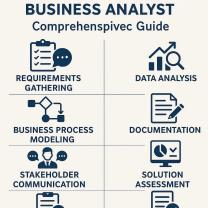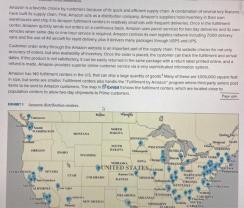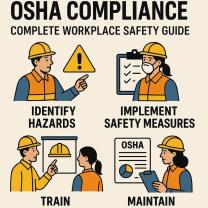What is an HR Compliance Program?
What Is an HR Compliance Program? Key Components and Benefits
In today’s complex workplace environment, businesses must follow numerous labor laws and regulations. An HR compliance program helps organizations stay aligned with these legal requirements while fostering a safe, fair, and productive workplace.
What Is an HR Compliance Program?
An HR compliance program is a structured system that ensures a company follows federal, state, and local employment laws and regulations. It establishes policies, procedures, and practices to protect both the organization and its employees from legal risks, penalties, and workplace disputes.
In short, an HR compliance program helps businesses do the right thing legally and ethically while supporting employee well-being.
Key Components of an HR Compliance Program
Employment Laws and Regulations
Covers laws such as the Fair Labor Standards Act (FLSA), Family and Medical Leave Act (FMLA), Equal Employment Opportunity (EEO) laws, and Occupational Safety and Health Administration (OSHA) requirements.
Employee Handbook and Policies
Provides clear policies on hiring, conduct, benefits, leave, harassment, and disciplinary procedures.
Training and Education
Regular training for HR staff, managers, and employees on compliance topics like workplace safety, anti-discrimination, and harassment prevention.
Recordkeeping and Documentation
Accurate recordkeeping of payroll, benefits, disciplinary actions, and employee files ensures transparency and legal protection.
Monitoring and Audits
Regular internal audits and assessments help identify gaps and ensure ongoing compliance.
Reporting and Complaint Mechanisms
Safe and confidential systems for employees to report workplace issues without fear of retaliation.
Benefits of an HR Compliance Program
Legal Protection: Reduces risk of lawsuits, fines, or penalties.
Employee Trust and Engagement: Builds a fair and respectful workplace culture.
Operational Efficiency: Standardized processes streamline HR operations.
Reputation Management: Demonstrates corporate responsibility and ethical practices.
Proactive Problem-Solving: Identifies and addresses issues before they escalate.
An HR compliance program is more than just following the law—it’s about creating a fair, safe, and transparent workplace. By implementing clear policies, regular training, and ongoing monitoring, organizations can protect themselves legally while also supporting employee satisfaction and trust.
An HR compliance program is essential for any organization to operate legally and ethically, protecting both the company and its employees. It ensures adherence to a vast array of employment laws and regulations at federal, state, and local levels.
What Is an HR Compliance Program?
An HR compliance program is a comprehensive set of policies, procedures, and practices designed to ensure an organization operates in full accordance with all applicable employment laws and regulations. It's not just about avoiding legal penalties; it's also about fostering a fair, safe, and equitable workplace, building employee trust, and protecting the company's reputation.
The primary goals of an HR compliance program include:
Mitigating Legal Risks: Preventing lawsuits, fines, and penalties related to non-compliance with labor laws.
Ensuring Fairness and Equity: Promoting fair hiring practices, equal opportunity, and a harassment-free environment.
Protecting Employees: Safeguarding employee rights, health, and safety.
Maintaining Reputation: Demonstrating a commitment to ethical business practices.
Operational Efficiency: Standardizing HR processes to ensure consistency and reduce errors.
Key Elements of Effective HR Compliance
An effective HR compliance program is multifaceted and typically includes the following key elements:
Policy Development and Documentation: Creating clear, concise, and legally compliant policies covering all aspects of employment (e.g., equal employment opportunity, harassment, leave, wages, discipline). These policies should be regularly reviewed and updated.
Training and Education: Providing mandatory and ongoing training for employees and managers on critical compliance topics such as anti-discrimination, harassment prevention, data privacy, and ethical conduct.
Record-Keeping: Meticulously maintaining accurate and complete employee records, including hiring documents, performance reviews, payroll records, benefits enrollment, and termination paperwork, in accordance with legal retention requirements.
Auditing and Monitoring: Regularly reviewing HR practices, policies, and records to identify potential gaps or areas of non-compliance. This includes internal audits and, sometimes, external third-party assessments.
Reporting Mechanisms: Establishing clear, accessible, and confidential channels for employees to report concerns, violations, or complaints (e.g., HR department, whistleblower hotlines).
Investigation and Remediation: Implementing a fair and consistent process for investigating reported complaints and taking appropriate corrective and disciplinary actions when violations occur.
Communication Strategy: Ensuring that all employees are aware of policies, procedures, and their rights and responsibilities. This involves employee handbooks, internal communications, and accessible resources.
Legal Counsel Collaboration: Working closely with legal experts (in-house or external) to interpret complex regulations, address specific legal challenges, and ensure policies are robust.
Legal and Regulatory Requirements for HR
HR compliance programs must address a wide array of federal, state, and local laws. Some of the most significant federal laws include:
Anti-Discrimination Laws:
Title VII of the Civil Rights Act of 1964: Prohibits discrimination based on race, color, religion, sex (including sexual orientation and gender identity), and national origin.
Age Discrimination in Employment Act (ADEA): Protects individuals aged 40 and older from employment discrimination.
Americans with Disabilities Act (ADA): Prohibits discrimination against qualified individuals with disabilities and requires reasonable accommodations.
Equal Pay Act (EPA): Mandates equal pay for equal work regardless of sex.
Wage and Hour Laws:
Fair Labor Standards Act (FLSA): Establishes minimum wage, overtime pay, record-keeping, and child labor standards.
Leave Laws:
Family and Medical Leave Act (FMLA): Provides eligible employees with up to 12 weeks of unpaid, job-protected leave for certain family and medical reasons.
Safety and Health Laws:
Occupational Safety and Health Act (OSHA): Ensures safe and healthful working conditions for employees.
Immigration Laws:
Immigration Reform and Control Act (IRCA): Requires employers to verify the employment eligibility of new hires (e.g., I-9 forms).
Benefits Laws:
Employee Retirement Income Security Act (ERISA): Sets standards for private industry pension and health plans.
Affordable Care Act (ACA): Imposes requirements related to employer-provided health insurance.
Labor Relations Laws:
National Labor Relations Act (NLRA): Protects employees' rights to organize and bargain collectively.
Privacy Laws:
Laws related to the privacy of employee health information (e.g., HIPAA) and other personal data.
Beyond federal laws, HR must also navigate complex state and local laws, which often have stricter requirements or cover areas not addressed federally (e.g., specific paid sick leave laws, ban-the-box initiatives, stricter discrimination protections).
Implementing Policies and Procedures
Implementing an HR compliance program effectively involves several practical steps:
Conduct a Compliance Audit: Begin by assessing current HR practices against all applicable laws and regulations to identify existing gaps or areas of non-compliance.
Develop/Update Policies and Handbooks: Draft clear, comprehensive, and legally sound policies. Create or update an employee handbook that outlines these policies, ensuring it is accessible to all employees.
Obtain Legal Review: Have all new or revised policies, procedures, and handbooks reviewed by legal counsel specializing in employment law to ensure they are compliant and mitigate risk.
Communicate and Distribute: Distribute the employee handbook and new policies to all employees. Require employees to acknowledge receipt and understanding, typically through a signed document.
Train Employees and Managers: Implement mandatory training sessions (in-person or online) for all employees on key compliance topics, particularly those related to anti-discrimination, harassment, and workplace safety. Managers should receive additional training on their responsibilities in upholding policies and handling compliance issues.
Establish Clear Reporting Channels: Ensure employees know how and to whom to report concerns, and that these channels are perceived as safe and confidential.
Integrate into Daily Operations: Embed compliance into everyday HR functions, from recruitment and onboarding to performance management, payroll, and termination processes.
Regular Review and Updates: Schedule periodic reviews (e.g., annually or bi-annually) of the entire compliance program to account for changes in laws, company operations, and best practices.
Monitoring and Auditing Compliance Programs
Continuous monitoring and regular auditing are vital to ensure an HR compliance program remains effective and responsive to changes.
Ongoing Monitoring:
Employee Feedback: Pay attention to employee questions, complaints, and informal feedback, as these can flag potential compliance issues.
Complaint Trends: Monitor the types and frequency of employee complaints to identify systemic problems or training needs.
Legislative Tracking: Stay abreast of new and changing federal, state, and local employment laws through legal updates, industry associations, and legal counsel.
HR Metrics: Track key HR metrics (e.g., turnover rates, diversity statistics, training completion rates) that might indicate compliance strengths or weaknesses.
Policy Effectiveness: Observe if policies are being consistently applied across the organization.
Regular Auditing:
Internal Audits: Conduct scheduled internal reviews of HR files, policies, and processes. This might involve:
I-9 Audits: Regularly check I-9 forms for accuracy and completeness.
Payroll Audits: Verify correct classification of employees (exempt vs. non-exempt), proper calculation of wages and overtime, and accurate deductions.
Leave Audits: Ensure FMLA and other leave policies are administered correctly.
EEO Audits: Review hiring and promotion data for signs of disparate impact or treatment.
External Audits: Consider engaging third-party experts to conduct independent HR compliance audits. External auditors can provide an objective assessment, identify blind spots, and offer recommendations based on industry best practices.
Documentation Review: Periodically review employee handbooks, policy manuals, and other compliance documents to ensure they are current, accurate, and clearly communicated.
Training Effectiveness Review: Assess whether compliance training programs are actually achieving their objectives by evaluating participation, comprehension, and behavioral changes.
Remediation and Follow-up: Any issues identified during monitoring or auditing should be promptly addressed with clear action plans and follow-up to ensure effective remediation. Documentation of these actions is crucial.
By integrating these monitoring and auditing practices, organizations can proactively manage HR compliance risks, continuously improve their workplace environment, and maintain legal standing.













